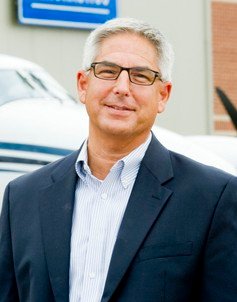In an innovative and proactive move, the Colorado Aeronautical Board (CAB) has approved $400,000 in state aviation funding to assist Federal Aviation Administration (FAA) certified commercial service airports in Colorado with the acquisition of equipment to minimize the environmental impact of firefighting foam containing toxic chemicals, known as polyfluoroalkyl substances (PFAS).
In Michigan, MDOT, the Michigan Aeronautics Commission (MAC), and the Michigan Department of Environment, Great Lakes, and Energy (EGLE), through the Michigan PFAS Action Response Team (MPART), have partnered with all 19 commercial service airports in the state to deploy groundbreaking aircraft rescue and firefighting (ARFF) testing equipment that eliminates a potential source of per- and polyfluoroalkyl substances (PFAS) release into the environment.

“Under existing federal rules, commercial service airports are required to test ARFF equipment, including firefighting foam proportioning systems, to ensure aviation-related fires can be extinguished quickly in an emergency situation,” said Mike Trout, executive administrator of the MDOT Office of Aeronautics, director of the MAC, and MPART delegate. “Given that we now more fully understand the concerns associated with some types of firefighting foam, establishing this grant program and bringing this new testing equipment to Michigan quickly was paramount.”
Approved by the MAC on March 27, the grant program provides each commercial service airport in Michigan with nearly $25,000 each to acquire environmentally conscious firefighting foam testing devices, such as the Ecologic System manufactured by E-One or the Oshkosh ECO EFP. These types of devices connect to existing ARFF trucks to ensure proper foam proportioning without the need to dispense any firefighting foam concentrate, which eliminates a potential pathway for PFAS to enter the environment while ensuring the readiness of airport firefighting equipment.
In Colorado, this new statewide initiative, developed in collaboration with the Colorado Department of Public Health and Environment (CDPHE), comes amid an increasing environmental focus on the PFAS chemicals, as they have been found to pose pervasive challenges to drinking water supplies. Airports certified under Federal Aviation Regulation (FAR) Part 139 are currently required by federal regulations to use PFAS-based foam, and to annually test and certify aircraft rescue firefighting equipment by discharging foam from a firefighting vehicle into a container. During this process, firefighting foam often comes in direct contact with the ground. Under the provisions of this new statewide aviation initiative, the Colorado Division of Aeronautics will provide funding of specialized testing and containment equipment designed to allow FAA-compliant firefighting foam testing to take place without the need for regular foam discharges.
Colorado has 14 FAA-certified airports that are eligible to receive funding to acquire this equipment with the exception of Denver International Airport (DEN) which already uses similar equipment for firefighting foam discharge testing and training, and Colorado Springs Municipal Airport, where aircraft rescue and firefighting services are provided by the United States Air Force.
In developing this statewide aviation initiative, the Colorado Division of Aeronautics has established a strong partnership with the Colorado Department of Public Health and Environment (CDPHE) to support CDPHE’s efforts in mitigating these chemicals statewide.
“The Division looks forward to working closely with CDPHE and Colorado’s airports to proactively taking action where we can to be good stewards of our environment and Colorado’s local communities,” said Aeronautics Division Director David Ulane.

“We are pleased that the Colorado Aeronautical Board will join with us in protecting the public from toxic chemicals found in some fire-fighting foams. Through the Board’s innovation, airports will be able to comply with federal law, keep their facilities and flight passengers safe, while also reducing serious negative long term environmental impacts,” said Jill Hunsaker Ryan, Executive Director, Colorado Department of Public Health and Environment. “Airports must be able to provide fire protection, while preventing Coloradoans’ drinking water from chemical contamination.”
“In Michigan more than half of the commercial service airports have fielded this equipment as of today,” said Trout. “We expect to have the systems in place at each of our commercial service airports very shortly.”
The Michigan grant program covers all airports that have a foam testing requirement.

